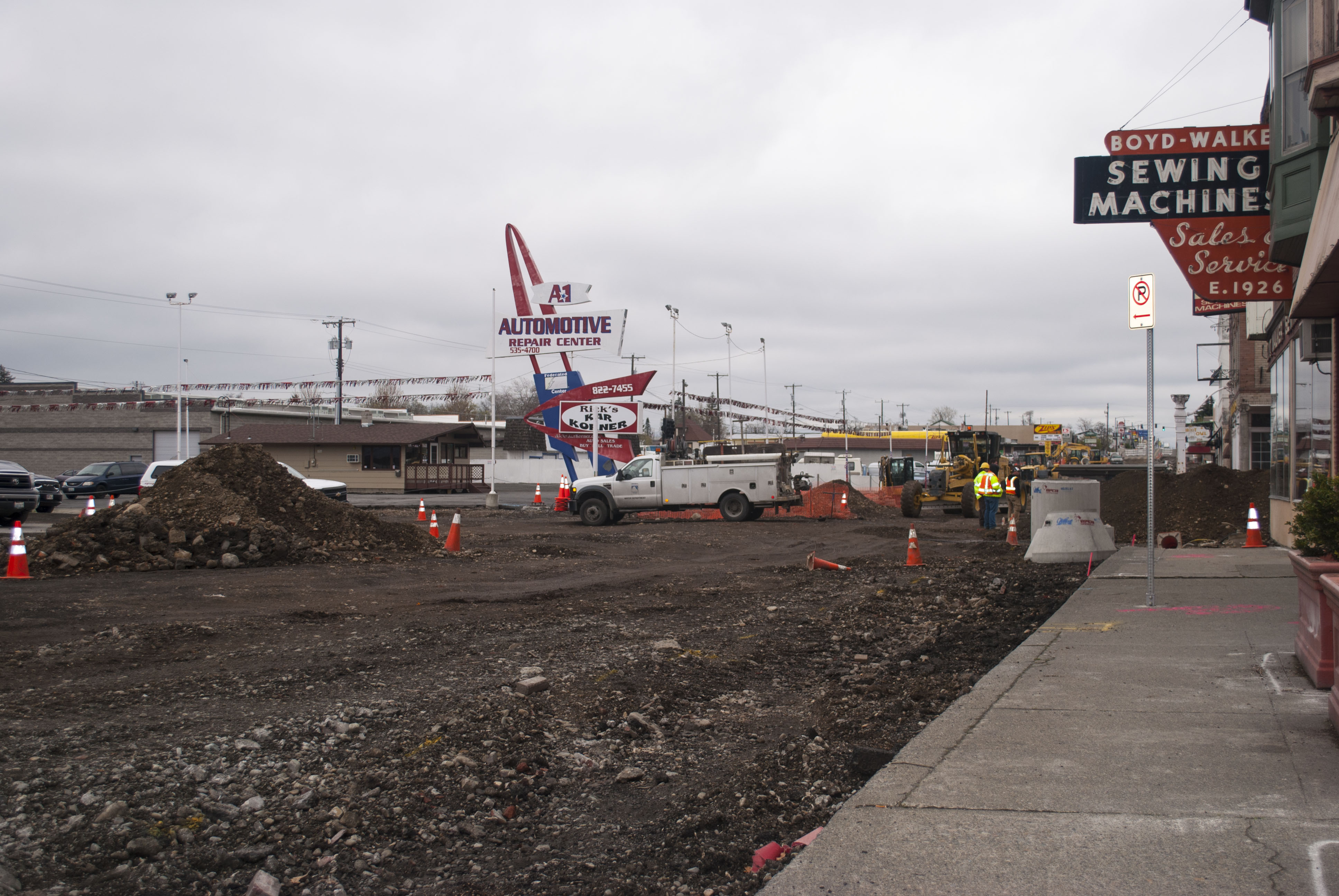
As inevitable as Spokane’s metamorphosis into a thriving metropolis seems to be, a transformation without guidance could lead to a destructive mutation instead.
New construction in the East Central neighborhood has promised to connect the University District to a revitalized East Sprague, complete with centralized, walkable retail spaces and modern apartments. Construction is already underway.
Currently, East Central is a disjointed collection of retail spaces, abandoned properties and uninviting sidewalks for pedestrians. Clearly, the neighborhood is not serving its community. At this point, moral hand-wringing over the threat of gentrification is akin to worrying about the scar from a double bypass.
“In Seattle, we see Amazon employees moving into Capitol Hill and driving up rents,” said Kitty Klitzke, Eastern Washington program director for Futurewise, a non-profit organization that promotes smart growth in Washington State. “If you start throwing that term out, people will get the impression that that’s happening in Spokane. When it’s not – the problem is not enough good jobs, and that we don’t have a strategic program in place for affordable housing.”
Still, the potential threat of gentrification should not be dismissed. Tom Angotti, professor of urban affairs and director of Hunter College’s Center for Community Planning, defines gentrification as: “When neighborhoods change in ways that force many longtime residents and businesses to move out because land prices and rents have skyrocketed overnight.”
Spokane can revitalize without displacing residents or exacerbating income inequality as long as it prioritizes the locality itself.
Folks who live in a neighborhood where revitalization is underway should be leading the discussion since they understand what works in their community. This is the opposite of, say, Walt Worth’s Davenport Grand, which robs Spokane of an entire block’s worth of ground floor retail space in a prime tourist and pedestrian area.
Neuroscientist Colin Ellard, in his book “Places of the Heart: The Psychogeography of Everyday Life,” explains that varied spaces create interested people (and vice versa):
“By simply changing the appearance and the physical structure of the bottom three meters of a building facade, it is possible to exert dramatic impact on the manner in which a city is used. Not only are people more likely to walk around in cityscapes with open and lively facades, but the kind of things that they do in such places actually change. They pause, look around, and absorb their surroundings while in a pleasant state of positive affect and with a lively, attentive nervous system. Because of these kinds of influences, they actually want to be there.”
For the East Central project, The East Sprague Business Association is on board with the new construction, but its residents should be involved as well. Without their input, it is unlikely that businesses would agree to compensation that provides a living wage within the neighborhood, or
that developers would set aside a certain percentage of their new apartments for low-income families. Both of these policies would work well to combat gentrification, yet without resident involvement, both have unfathomably poor odds of implementation.
Another important part of a successful revitalization is rewarding urban infill. By reinvigorating neighborhoods central to Spokane’s core, transit and pedestrian networks become denser and therefore more easily traversed and maintained. This is crucial for low-income people who may not be able to afford an automobile and its associated costs, which, according to Klitzke, is the second-largest expense for most households.
Unfortunately, Spokane is forced to compete with county projects that are often not subject to the same development requirements.
“Spokane County allows developments in the county that don’t have sidewalks or bus service. It’s cheaper for developers, cheaper to build multi-family homes, and there’s not a lot of investment in overall livability,” said Klitzke.
It’s possible for the city to pressure or encourage the County to follow Growth Management Codes more closely, however it is unlikely to make a difference in the foreseeable future since all of the standing county commissioners are backed by developers.
Revitalization is inherently entwined with livability. Spokane has a duty to its residents to revitalize impoverished communities without courting gentrification in the process. Spokane is the only large city for hundreds of miles. It is the jewel of the Inland Northwest. It should be enjoyed by all its citizens, regardless of income.
